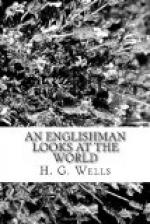A considerable proportion of the Mediterranean arrivals, it has to be noted, and more especially the Italians, do not come to settle. They work for a season or a few years, and then return to Italy. The rest come to stay.
A vast proportion of these accessions to the American population since 1840 has, with the exception of the East European Jews, consisted of peasantry, mainly or totally illiterate, accustomed to a low standard of life and heavy bodily toil. For most of them the transfer to a new country meant severance from the religious communion in which they had been bred and from the servilities or subordinations to which they were accustomed They brought little or no positive social tradition to the synthesis to which they brought their blood and muscle.
The earlier German, English and Scandinavian incomers were drawn from a somewhat higher social level, and were much more closely akin in habits and faith to the earlier founders of the Republic.
Our inquiry is this: What social structure is this pool of mixed humanity developing or likely to develop?
Sec. 2
If we compare any European nation with the American, we perceive at once certain broad differences. The former, in comparison with the latter, is evolved and organised; the latter, in comparison with the former, is aggregated and chaotic. In nearly every European country there is a social system often quite elaborately classed and defined; each class with a sense of function, with an idea of what is due to it and what is expected of it. Nearly everywhere you find a governing class, aristocratic in spirit, sometimes no doubt highly modified by recent economic and industrial changes, with more or less of the tradition of a feudal nobility, then a definite great mercantile class, then a large self-respecting middle class of professional men, minor merchants, and so forth, then a new industrial class of employees in the manufacturing and urban districts, and a peasant population rooted to the land. There are, of course, many local modifications of this form: in France the nobility is mostly expropriated; in England, since the days of John Bull, the peasant has lost his common rights and his holding, and become an “agricultural labourer” to a newer class of more extensive farmer. But these are differences in detail; the fact of the organisation, and the still more important fact of the traditional feeling of organisation, remain true of all these older communities.
And in nearly every European country, though it may be somewhat despoiled here and shorn of exclusive predominance there, or represented by a dislocated “reformed” member, is the Church, custodian of a great moral tradition, closely associated with the national universities and the organisation of national thought. The typical European town has its castle or great house, its cathedral or church, its middle-class and lower-class quarters. Five




